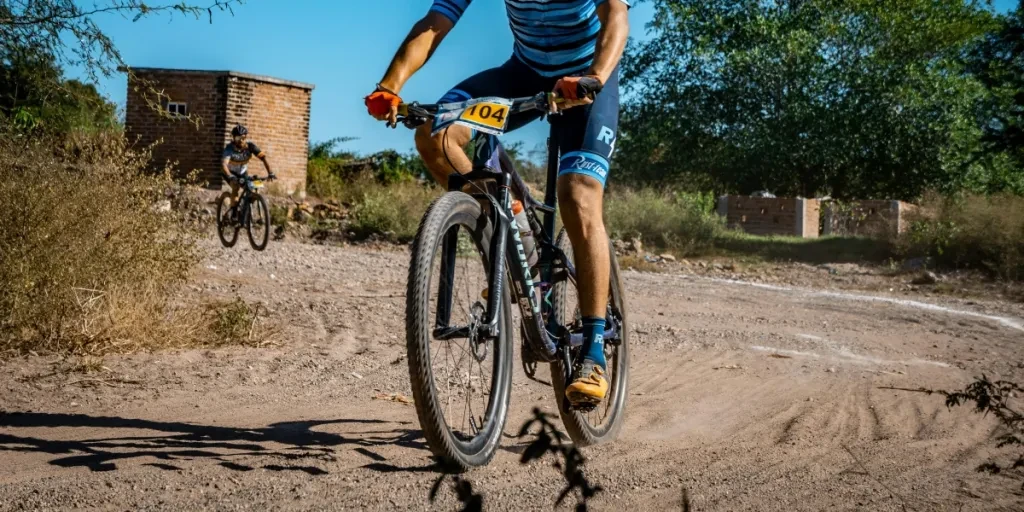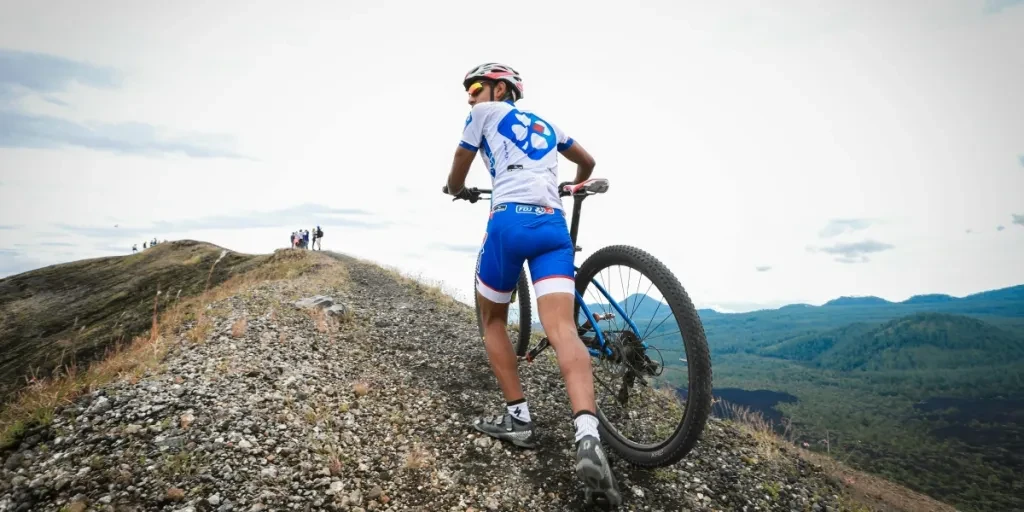Gravel biking has surged in popularity, blending the thrill of off-road cycling with the endurance of road biking. This hybrid sport offers versatility, allowing riders to explore diverse terrains. As the market expands, understanding its dynamics, key players, and regional trends is crucial for businesses and enthusiasts alike.
Table of Contents:
Market Overview
Materials and Design: Crafting the Perfect Gravel Bike
Technological Features: The Future of Gravel Biking
Performance and Functionality: Meeting the Needs of Enthusiasts
Cultural Influence: Gravel Biking as a Lifestyle
Conclusion
Market Overview

The Rise of Gravel Biking
Gravel biking has emerged as a significant trend in the cycling industry, driven by the desire for adventure and the flexibility to traverse various terrains. According to a report by Research and Markets, the global cycling wear market, which includes gravel biking apparel, grew from USD 4.36 billion in 2023 to USD 4.60 billion in 2024. This growth is expected to continue at a CAGR of 5.95%, reaching USD 6.54 billion by 2030. The increasing health awareness and the popularity of eco-friendly transportation modes have significantly contributed to this rise.
Key Market Players and Innovations
Several key players dominate the gravel biking market, continuously innovating to meet the evolving demands of cyclists. Companies like PEARL iZUMi, Shimano Inc., and Trek Bicycle Corporation are at the forefront, offering advanced products that enhance performance and comfort. For instance, PEARL iZUMi, acquired by United Sports Brands, focuses on developing high-quality cycling apparel that incorporates smart technology for monitoring vital signs and tracking performance metrics.
Innovations in gravel biking gear include electronic shifting systems, which provide seamless gear changes, and advanced frame materials like carbon fiber, which offer durability and lightweight performance. These technological advancements are crucial in attracting both amateur and professional cyclists to the sport.
Global Demand and Regional Trends
The demand for gravel biking is growing globally, with significant regional variations. In North America, government initiatives promoting outdoor activities and the development of cycling infrastructure have boosted the market. According to the U.S. Bureau of Labor Statistics, 96% of Americans engaged in sports and leisure activities in 2021, highlighting the potential for growth in the cycling sector.
In Europe, the rich tradition of cycling as both a sport and a mode of daily commute drives the market. The region’s diverse climate conditions necessitate a wide range of cycling products, from weather-resistant apparel to versatile bikes. The European market is also influenced by a strong preference for sustainable and eco-friendly products, aligning with the global trend towards environmental consciousness.
The Asia-Pacific region is witnessing rapid growth in the gravel biking market, driven by increasing urbanization and government policies favoring cycling. The expansion of eCommerce platforms in this region provides a significant opportunity for market players to reach a broader audience. Countries like China and Japan are leading the way, with a growing number of consumers seeking functional and fashionable cycling apparel.
Materials and Design: Crafting the Perfect Gravel Bike

Advanced Frame Materials for Durability and Performance
Gravel bikes are designed to handle a variety of terrains, from gravel trails to forest service roads. The choice of frame material is crucial in ensuring both durability and performance. According to a professional report, carbon and aluminum are the most popular materials for gravel bike frames. Carbon is favored for its lightweight properties, making it an excellent choice for those who prioritize efficiency and speed. It is often the material of choice for high-end models due to its ability to absorb vibrations, providing a smoother ride on rough terrains.
Aluminum, on the other hand, is known for its durability and affordability. It offers a good balance between weight and strength, making it a popular choice for mid-range gravel bikes. Aluminum frames are also easier to repair compared to carbon, which can be a significant advantage for long-distance riders who may encounter rough conditions.
Steel and titanium are less common but still noteworthy. Steel frames, such as those found in the Surly Straggler and Co-op Cycles ADV 1.1, are known for their durability and comfort. They can absorb more road vibrations, providing a smoother ride. Titanium frames, like the Moots Routt YBB, offer a unique combination of light weight, strength, and comfort, but they come at a higher price point.
Innovative Design Elements for Enhanced Comfort and Safety
Gravel bikes incorporate several design elements to enhance comfort and safety. One of the key features is the frame geometry. Gravel bikes typically have a more relaxed geometry compared to road bikes, with a longer wheelbase and a more upright seating position. This design provides better stability and comfort over long distances and rough terrains.
Another important design element is the tire clearance. Gravel bikes are designed to accommodate wider tires, often up to 700c x 45mm. Wider tires provide better traction and stability on loose surfaces, and they can be run at lower pressures to absorb more bumps and vibrations.
Multiple mounting points for water bottles, bags, and other gear are also a common feature on gravel bikes. This is particularly important for long rides where riders need to carry extra supplies. For example, the Cannondale Topstone features four mounting locations, compared to just two on a typical road bike.
Disc brakes are another essential feature for gravel bikes. They provide better stopping power and control, especially on long descents and in varying weather conditions. Hydraulic disc brakes are preferred for their superior performance, although mechanical disc brakes are also common on more affordable models.
Technological Features: The Future of Gravel Biking

Cutting-Edge Gear Systems and Electronic Shifting
The drivetrain and gear system are critical components of a gravel bike, affecting both performance and versatility. Modern gravel bikes often feature wide-range gearing to handle a variety of terrains. For instance, the Norco Search XR A2 comes with a 2 x 10 Shimano drivetrain, which provides a good balance of gears for both climbing and descending.
Electronic shifting is becoming increasingly popular in the gravel biking world. Systems like SRAM’s electronic Force AXS drivetrain offer precise and reliable shifting, which can be a significant advantage on challenging terrains. Electronic shifting systems are also easier to maintain and can be customized to suit individual preferences.
Integration of Smart Technology and GPS Navigation
Smart technology is making its way into gravel biking, with features like integrated GPS navigation and performance tracking. Many modern gravel bikes come with mounts for GPS devices, and some even have integrated systems. These technologies allow riders to plan and navigate routes more effectively, track their performance, and share their rides with the gravel biking community.
For example, the Moots Routt YBB features a titanium frame with integrated mounts for GPS devices, making it easier for riders to navigate and track their rides. This integration of smart technology enhances the overall riding experience and provides valuable data for improving performance.
Performance and Functionality: Meeting the Needs of Enthusiasts

Versatility and Adaptability for Various Terrains
Gravel bikes are designed to be versatile and adaptable, capable of handling a wide range of terrains. This versatility is achieved through a combination of frame geometry, tire clearance, and gearing options. For example, the Giant Revolt and Canyon Grizl are designed to balance speed, comfort, and capability over a variety of terrains, making them suitable for both daily commutes and weekend adventures.
The ability to switch between different wheel sizes, such as 700c and 650b, also adds to the versatility of gravel bikes. 700c wheels are typically faster and more efficient on smoother surfaces, while 650b wheels with wider tires provide better traction and comfort on rougher terrains.
Essential Features for Optimal Performance
Several features are essential for optimal performance in gravel biking. High-volume tires are crucial for providing better traction and stability on loose surfaces. Tubeless tires are also becoming more popular, as they offer lower rolling resistance, fewer flats, and the ability to run at lower pressures for better comfort and control.
Suspension systems, such as the 20mm rear micro-suspension found on the Moots Routt YBB, can significantly enhance comfort and control on rough terrains. These systems help to absorb shocks and vibrations, reducing fatigue and allowing riders to maintain better control over their bikes.
Weight is another important factor in gravel biking. Lighter bikes are generally more efficient and easier to handle, especially on climbs. However, it’s important to balance weight with durability and comfort, as overly lightweight bikes may not be as robust or comfortable on rough terrains.
Cultural Influence: Gravel Biking as a Lifestyle

The Community and Culture Surrounding Gravel Biking
Gravel biking has grown into more than just a sport; it has become a lifestyle for many enthusiasts. The gravel biking community is known for its inclusivity and camaraderie. Riders often share their experiences, routes, and tips through social media and online forums, creating a supportive and engaged community.
Gravel biking events and group rides are also popular, providing opportunities for riders to connect and share their passion. These events often emphasize adventure and exploration, rather than competition, making them accessible to riders of all skill levels.
Events and Competitions Driving Popularity
Events and competitions play a significant role in driving the popularity of gravel biking. Races like the Dirty Kanza and Grinduro have gained significant attention, attracting riders from around the world. These events often feature challenging courses that test riders’ endurance and skills, while also showcasing the versatility and capability of gravel bikes.
In addition to competitive events, there are also numerous non-competitive gravel biking events and festivals. These gatherings celebrate the adventure and community aspects of gravel biking, offering group rides, workshops, and social activities.
Conclusion
Gravel biking is a dynamic and rapidly evolving segment of the cycling industry, driven by advancements in materials, design, and technology. The versatility and adaptability of gravel bikes make them suitable for a wide range of terrains and riding styles, from daily commutes to epic adventures. As the gravel biking community continues to grow, so too will the innovations and trends that shape this exciting sport. Looking ahead, the integration of smart technology and the development of new materials and designs will further enhance the performance and experience of gravel biking, making it an even more appealing option for cyclists around the world.




